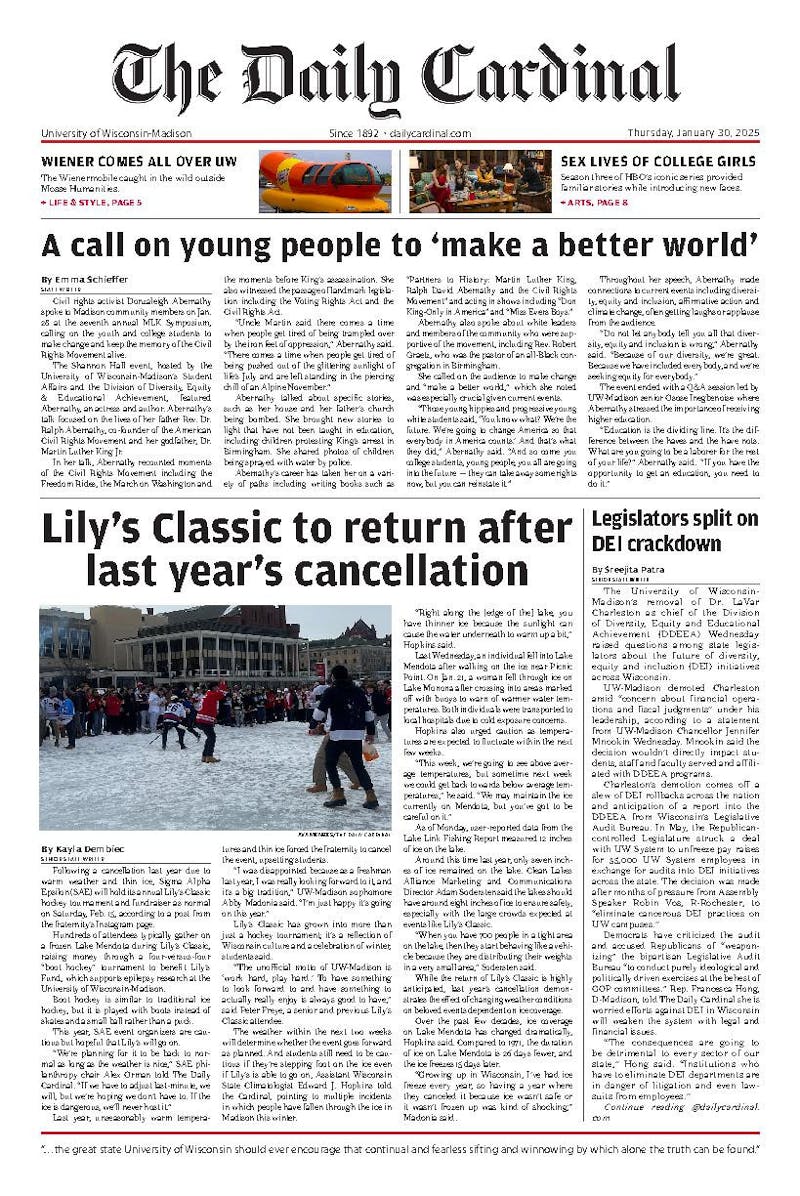From sculpture to paintings, weaving to pottery, the University of Wisconsin’s Chazen Museum of Art is home to some of the most thought-provoking art in the state of Wisconsin.
While these intriguing pieces are a mainstay of a quality art museum, the Chazen has departed from the norm this month in introducing a wholly new experience — one that curators hope will inspire conversation and action among museum-goers. The Chazen’s newest showpiece “Sifting and Reckoning” is a blend of both artistic nuance and historical perspective that examines how discriminatory practices at the university have historically altered the student experience.
Historical artifacts from the UW Archives combine with curator commentaries to detail the history of marginalization on campus. From athletics to admissions, housing and class work, the exhibit spares no details in recounting the school’s exclusionary past.
Kacie Lucchini Butcher, Director of the Public History Project behind the exhibit says the installation breaks new ground for the museum, which has never before hosted a project with a scope such as “Sifting and Reckoning.”
“It’s a really unique exhibit for the Chazen because it is so history focused; it’s really unlike anything they’ve done before,” Butcher told the Cardinal.
“Sifting and Reckoning” begins with a content warning at the entrance stating that the material contained within can be challenging for some. As mentioned by Butcher, the breaking of new ground – for curators and viewers alike – is a theme throughout.
Walking about the exhibit, one quickly begins to understand the level of care and depth put into the installation. A combination of photos, videos and artifacts work to tell the story of how UW has grown from its discriminatory roots. As Assistant Director Taylor Bailey of the Public History Project said, this was precisely the goal: making the experience an eye-opening one for UW students and faculty especially.
“We’re really hoping that people who come through our exhibition and really engage with our events and materials are using this as an opportunity to go through the history of the institution and use this, the student body and the institution itself, as a way to gain momentum with reckoning with the history and looking for ways to make the campus environment more welcoming and more inclusive and more equitable for all,” Bailey said.
Central to the exhibit is its interactivity. On two occasions it solicits feedback from viewers by asking their thoughts on the university.
In one section titled “Who is a Badger?” the exhibit invites viewers to share their feelings on belonging at the school by writing whether or not they identify themselves as Badgers on paper pennants hanging on the wall. This section, Butcher said, came about from several trial conversations with community members, which led to some stimulating conversation.
“The ‘do you call yourself a Badger’ question was such a powerful one. Immediately we realized that is something that people have complex, rich thoughts about,” Butcher shared.
Later, the exhibit invites viewers to respond to prompts mounted to a magnetic wall, furthering the centrality of discussion within the experience. These include “The university needs to…”, “I feel inspired by…” and others that encourage a thoughtful examination of one’s association with UW-Madison.
“Those prompts are a way for them to process everything that they are sitting with at the end of the exhibition,” Bailey added.
Coming out of “Sifting and Reckoning,” it is easy to feel discouraged at the overwhelming number of negative artifacts.
Butcher says a key takeaway of the exhibit is the fact that these dark realities allude to the potential for a better future.
“[Finding levity] was very intentional for us. All of these things happened and we needed to tell [these stories],” she said. “They’re important, even if they are difficult, even if they are hard. That doesn’t mean that there isn’t a hopeful note here.”
Bailey agreed, noting the challenging nature of the exhibit is an important part of moving forward as a campus united in undoing these wrongs.
“Obviously, these histories are difficult histories for us, but I think it's important for this campus community to be able to reckon with that history bravely in order to arrive at a better future together.”
The exhibit will remain on display at the Chazen through the end of the calendar year. The Public History Project is expected to report their findings from the exhibit in the spring of 2023.






